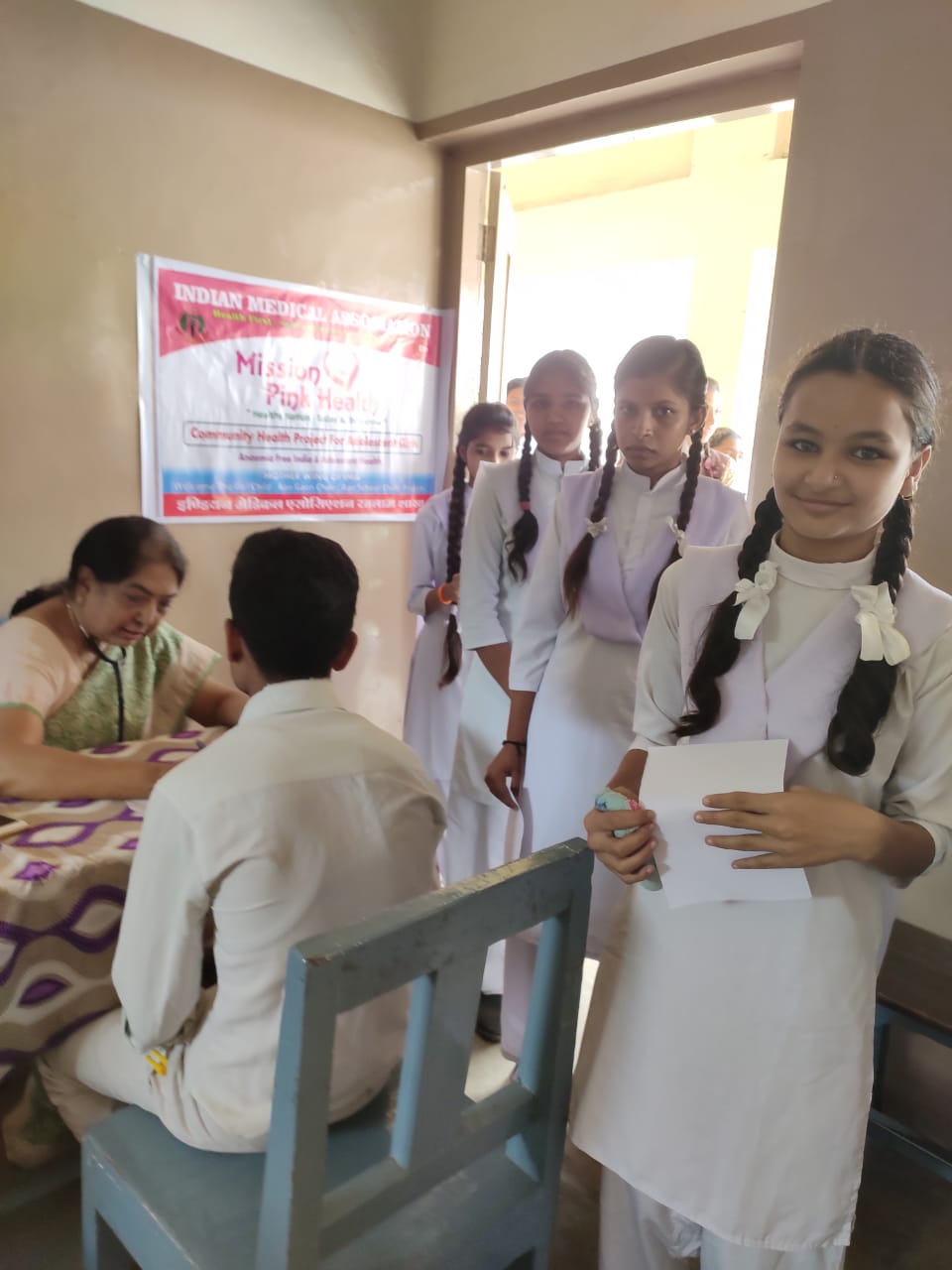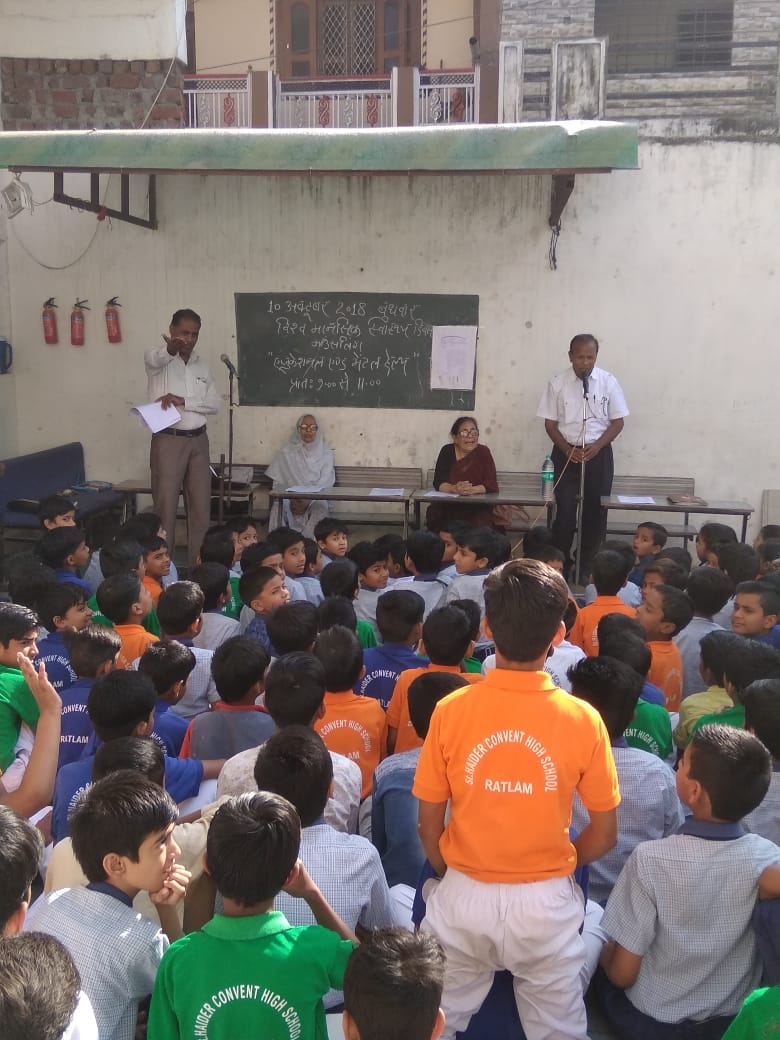This 82-YO Doctor Single-handedly Reduced an MP District’s Maternal Mortality Rate
“All it takes is unwavering dedication and commitment towards your work. I am very honoured and proud. I dedicate my Padma Shri award to my mother, sister and all those women and children who have been a part of my journey.”

Dr Leela Joshi never imagined that she would bag India’s fourth-highest civilian award, the Padma Shri, at 82.
It was only after winning the award did the Ratlam-based gynaecologist realise what it takes to be recognised nationally.
“All it takes is unwavering dedication and commitment towards your work. I am very honoured and proud. I dedicate this award to my mother, sister, and all those women and children who have been a part of my journey,” Dr Joshi tells The Better India.
Dr Joshi belongs to those rare species of people whose lives begin after retirement.
After retiring in 1997 as the Chief Medical Officer in Railways, she devoted nearly 23 years of her life in correcting anaemia and undernutrition in tribal women (especially the pregnant ones) and children of Ratlam.
Through her NGO, Shri Sewa Sanstha (SSS), Dr Joshi has been instrumental in reducing the overall Maternal Mortality Rate (MMR) in the district.
Fondly known as the ‘Mother Teresa of Ratlam’, Dr Joshi has also been named among the top 100 influential women of the country by the Department of Women and Child Development and the Pride of Fogsi (Federation of Obstetric & Gynaecologist Society of India).
How A Daughter Made Her Mother’s Dream Her Life Mission

Dr Joshi was born in Uttarakhand’s Almora district. While her father worked for Indian Railways, her mother Parvati was a homemaker.
Though Parvati was happy raising children and taking care of the house, there remained an unfulfilled dream.
“My mother was merely 14 when she understood the grave problem of anaemia in rural women and deaths due to malnutrition. She always wanted to be a doctor or nurse to provide better health facilities, but circumstances did not allow her to do so. So, she wanted one of her children to get into the medical field, a profession she considered selfless and noble,” shares Dr Joshi.
Parvati never imposed her wishes, but as fate would have it, Dr Joshi was inclined towards medicine. She completed MBBS from Mahatma Gandhi Memorial Medical College, Indore, in 1961 and went on to join the railway health services.
Over the years, she served on several posts, from executive director health to chief medical officer till 1996, the year she retired in Guwahati.
That same year, she met Mother Teresa, who is known for her humanitarian causes.
“I was lucky to meet Mother Teresa just a year before she passed away. She held my hand and urged me to work towards health in the tribal belts.”
In a separate incident, Dr Joshi was urged to use her medical expertise and help the underprivileged section of Ratlam. “I was visiting my sister in Ratlam when I interacted with a few health experts of a government hospital. They even wrote telegrams when I was living in Dehradun.”
These events pushed Dr Joshi to embark on her mother’s unfulfilled dream of serving women and children who could not access or afford quality healthcare.
Along with starting her NGO, she also became the state coordinator of Pink India Mission of the Indian Medical Association.
The Problem

Before starting her service, Dr Joshi formulated a team of retired health experts and educators who were equally empathetic, passionate, and dedicated. Having locals in her team also made it easier to make inroads in the remotest parts of Ratlam and form a bond with the villagers.
Of course, Dr Joshi was aware of anaemia, and untimely deaths among women and children, but working on the ground revealed a grim reality.
“It is a neglected approach towards girls, inadequate diet, patriarchal nature of the society, poverty, and poor healthcare infrastructure that has snowballed in rampant anaemia and undernutrition, especially in the backward regions of India. We, thus, adopted a cumulative strategy to tackle such issues,” says Dr Joshi.
Another issue was the lack of willingness among government agencies.
“We found a severely anaemic woman in a remote area. When we questioned a government health worker, she said the patient was least interested in the programme. That’s when I realised that some cases need an aggressive approach. We immediately admitted her in the hospital and worked on her deficiencies. She had a normal delivery,” says Dr Joshi.
Dr Joshi also collaborated with government hospitals, healthcare departments, women Self-Help Groups (SHGs), and Anganwadi and ASHA workers to procure manpower and medicines.
The Solution

Government health centres provide SSS with space for conducting free health camps for women and children. On average, Dr Joshi organises the camps twice a month for at least 200 women.
“We check their haemoglobin levels and accordingly, prescribe medicines or treatment. Women having iron or blood deficiencies can succumb to death in no time,” she says.
Over the years, Dr Joshi has treated women whose haemoglobin level was four against the requirement of twelve. A similar statistic was also found among school children.
Under the 12/12/12 scheme for 12-year-old girls or those studying in class 12, the NGO ensures they have 12 grams of haemoglobin in their blood.
Dr Joshi also regularly organises awareness programmes in schools and villages to inform the seriousness of the issue and have one-on-one interactions.
“Many women are confined to their houses and not allowed to visit hospitals. Personal discussions not only helped us identify health problems but also educated the women about personal hygiene. In schools too, children were comfortable enough to speak about their health problems,” Dr Sulochna Sharma, a retired district education officer, tells The Better India. Dr Sharma joined the NGO 20 years ago and has since devoted her time and efforts.
Unlike the usual healthcare initiatives, Dr Joshi formulated a result-oriented programme that not only involved prescriptions but also follow-ups to ensure success.
The NGO came up with Poshtik Ahar (nutrient-rich food) which is a powdered mix of supplements like soybean, peanut, jaggery and ghee. Women and children with severe anaemia are given this mix per month, along with oral tablets and sometimes intravenous iron sucrose for free.
“If none of the above works, we bring the patient to district hospitals where they undergo blood transfusions or treatments at no cost. Our main focus is on pregnant women, who we monitor strictly. In their last cycle, we ensure their haemoglobin levels at least reach 10 grams,” she adds.
The cost for all these efforts is borne by the NGO, which has benevolent donors and hospitals that provide them with free medicines or at low rates.
To follow up, Dr Joshi appoints one teacher in every school who looks after the anaemic child and ensures they take oral tablets or powders on time. Three months later, the NGO again examines their progress.
Impact

Dr Joshi proudly tells me about a behavioural change she has recorded in Ratlam. “Women are now less reluctant to approach a doctor. If a woman benefits from our programme, she spreads the word and educates others. An improvement in the health conditions of expecting mothers is also reflected in the reduction of neonatal deaths.”
An increase in attendance and improvement in academic performance of students are other visible impacts, says Dr Sharma, “Healthy students always focus better, and many parents have reached out to us thanking us for the same.”
Dr Joshi claims to have catered to 3.5 lakh children and lakhs of women in her mission spanning two decades.
And though it is a thankless job, Dr Joshi continues to rescue a large number of children and women from anaemia and other related problems despite her old age.
Edited by Shruti Singhal
Like this story? Or have something to share?
Write to us: [email protected]
Connect with us on Facebook and Twitter.
If you found our stories insightful, informative, or even just enjoyable, we invite you to consider making a voluntary payment to support the work we do at The Better India. Your contribution helps us continue producing quality content that educates, inspires, and drives positive change.
Choose one of the payment options below for your contribution-
By paying for the stories you value, you directly contribute to sustaining our efforts focused on making a difference in the world. Together, let’s ensure that impactful stories continue to be told and shared, enriching lives and communities alike.
Thank you for your support. Here are some frequently asked questions you might find helpful to know why you are contributing?


This story made me
-
97
-
121
-
89
-
167













